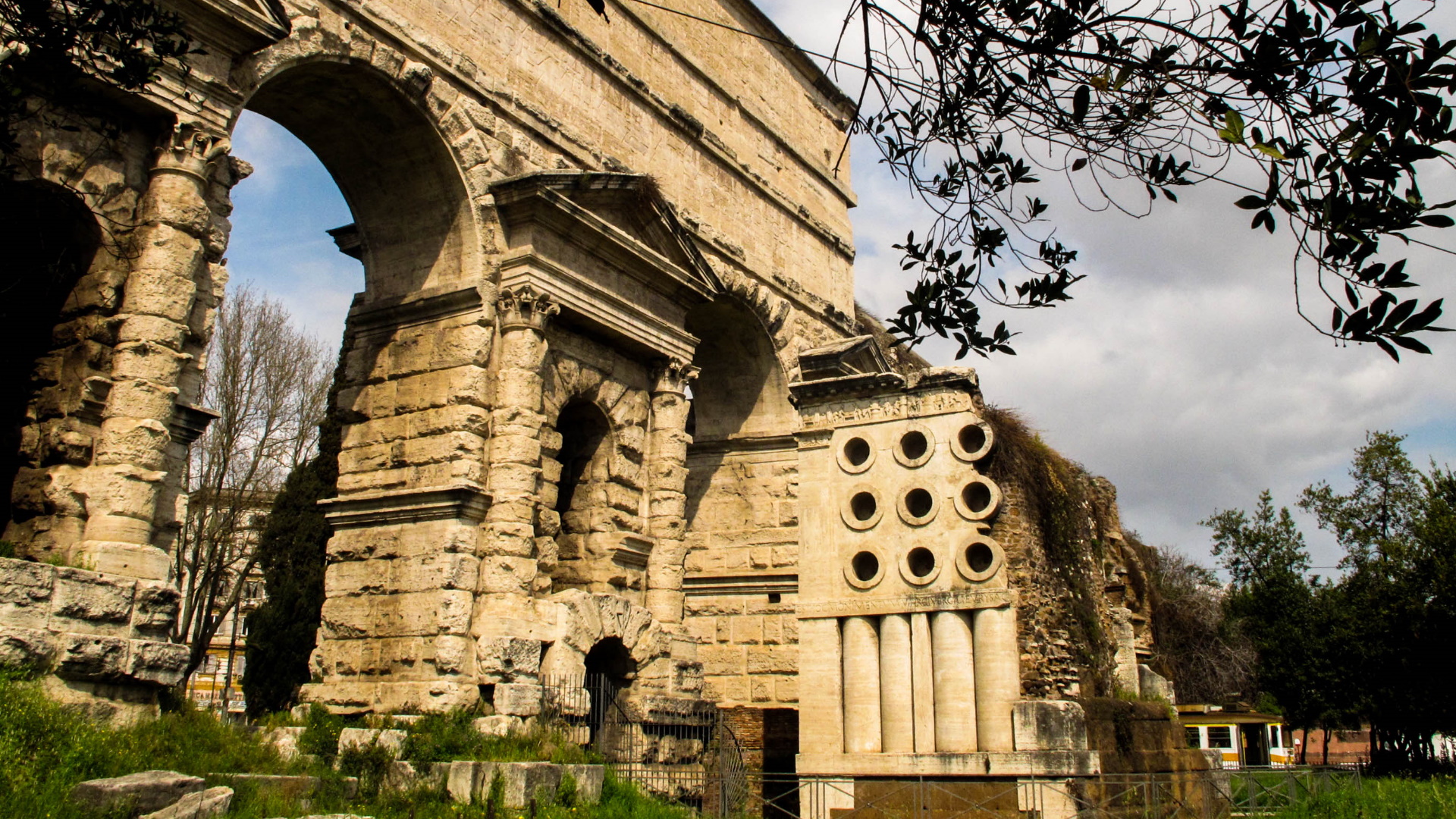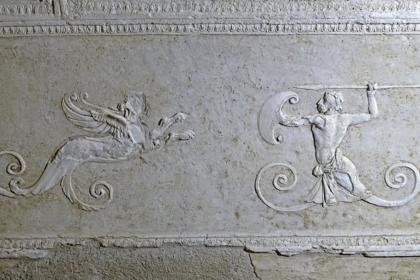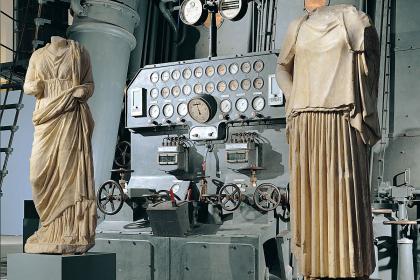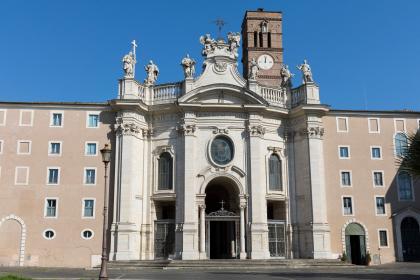
Among the most solemn architectures of the Roman Empire, we cannot fail to mention Porta Maggiore (or Porta Prenestina), erected in 52 AD by Emperor Claudius at the crossroads of the two roads leading to Preneste and Labici.
Initially, the gate was the the monumental establishment of the Claudius Aqueduct, where it crossed ‘Via Labicana’ and ‘Via Praenestina’; in 272 AD, emperor Aurelian included it in the Aurelian Walls to be used as a gate, thanks to the arches of the aqueduct that took the appearance of an actual triumphal archway.
With its mighty architecture in opus quadratum of travertine, the majestic door has two arches flanked by aedicules with Corinthian half-columns, opened by minor arches and surmounted by an imposing attic, contrasting for the smooth surface, where are carved the inscriptions by Claudio and the restorers of the aqueducts, the emperors Vespasiano and Tito.
Close to the central aedicule, there is the late Republican sepulchre of the baker Eurisace and his wife Atinia, brought to light in 1838. The structure, partially preserved, has a base in tuff and travertine, surmounted by a sack masonry covered with travertine blocks.
The decoration shows the most characteristic parts of the oven, while in the frieze are the representations of the processing and sale of bread.
The sepulcher of the baker Eurysaces and his wife Atistia, dated between the end of the Republican age and the early years of the Augustan age (30-20 BC), stood in the space between the Labicana and Prenestina streets and this determined its irregular quadrilateral plan.
The partially preserved structure consists of a base in Aniene tuff and travertine surmounted by a rubble masonry covered with travertine blocks. The marble relief of the two spouses, now preserved in the Capitoline Museums, was probably located on the east facade, now lost following the demolition of the towers of the Porta Labicana-Prenestina, built by Honorius. The circular cavities in the upper part are the characteristic of this monument, which symbolize the mixers used in the ovens. These elements also appear depicted in the frieze where the various stages of baking are represented in the presence of the owner Eurysaces together with some state officials.
The surname Eurysaces, of Greek origin, reveals the condition of freedman of Marcus Vergilius, who had become rich with his bakery and had wanted to leave the memory of his profession in the figurative setup of the sepulcher. In fact, in the inscription placed on the west side, and repeated substantially the same on the three remaining sides, we read: est hoc monimentum Margei Vergilei Eurysacis pistoris redemmptoris apparet (this is the tomb of Marcus Vergilius Eurysaces, baker, public supply contractor and attendant – that is subordinate officer of a priest or magistrate).
The urns containing the ashes of the deceased (which only one was found of, now preserved in the National Roman Museum) were made in basket shape and were probably located on the eastern side which is now lost.
The monument was later placed in one of the watchtowers of the Aurelian Walls at the time of Honorius and was brought to light only in 1838 on the occasion of the demolition of the structures pertaining to Porta Labicana.
Neo-Pythagorean Basilica of Porta Maggiore

 Condividi
Condividi
Centrale Montemartini

 Condividi
Condividi
The Basilica of Santa Croce in Gerusalemme

 Condividi
Condividi
Information
 Condividi
Condividi
Location
To find out about all accessibility services, visit the Rome accessible section.











































